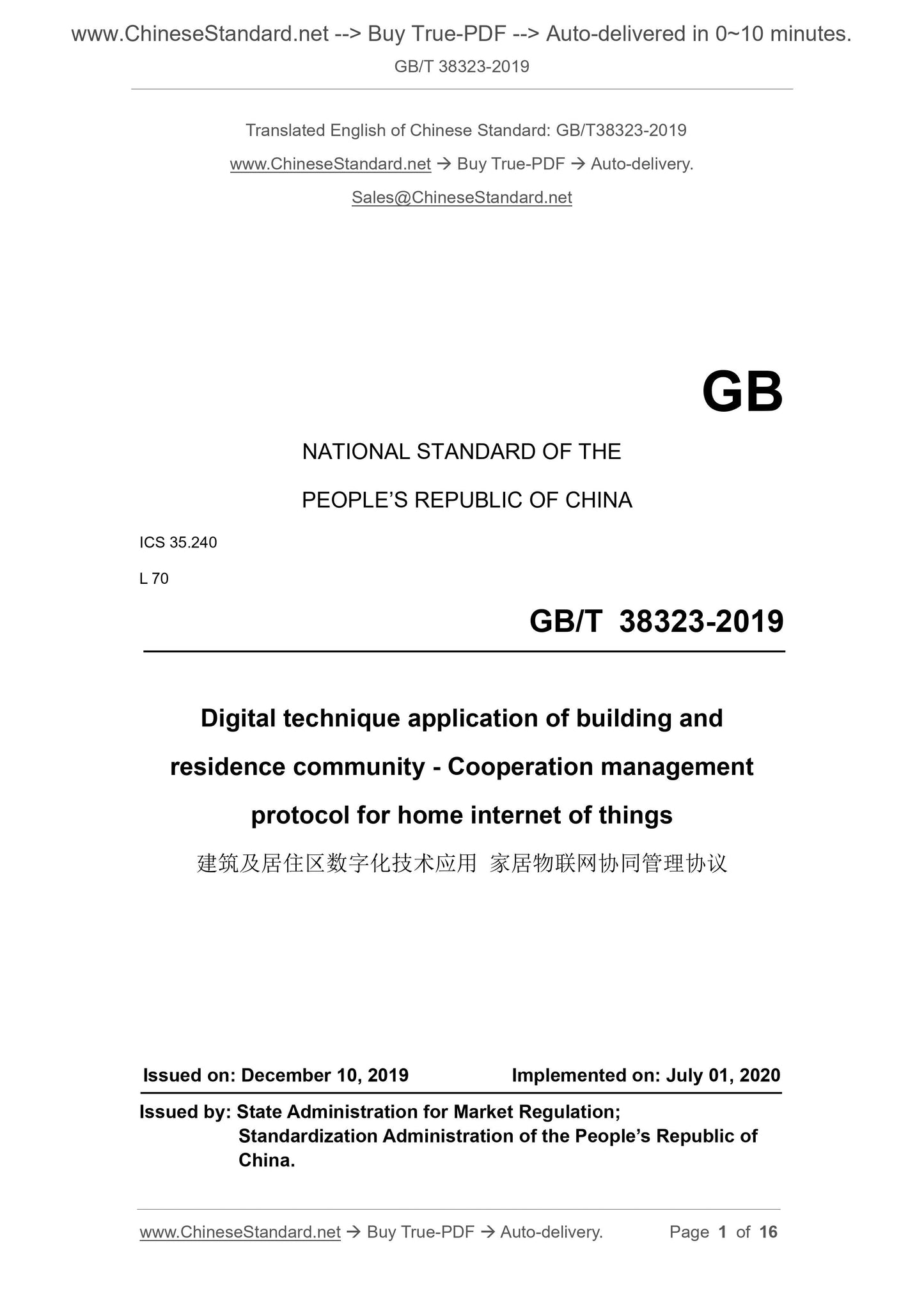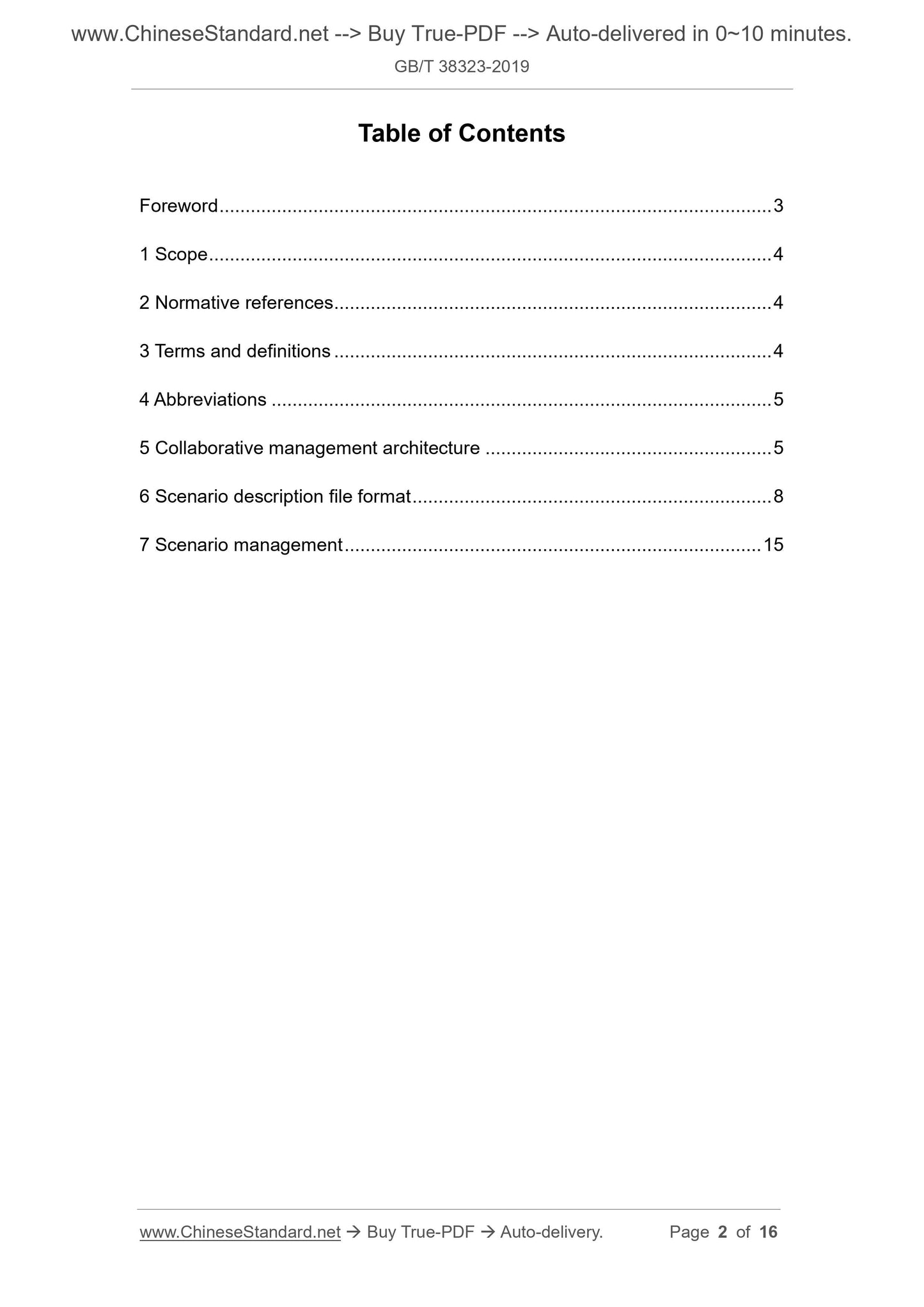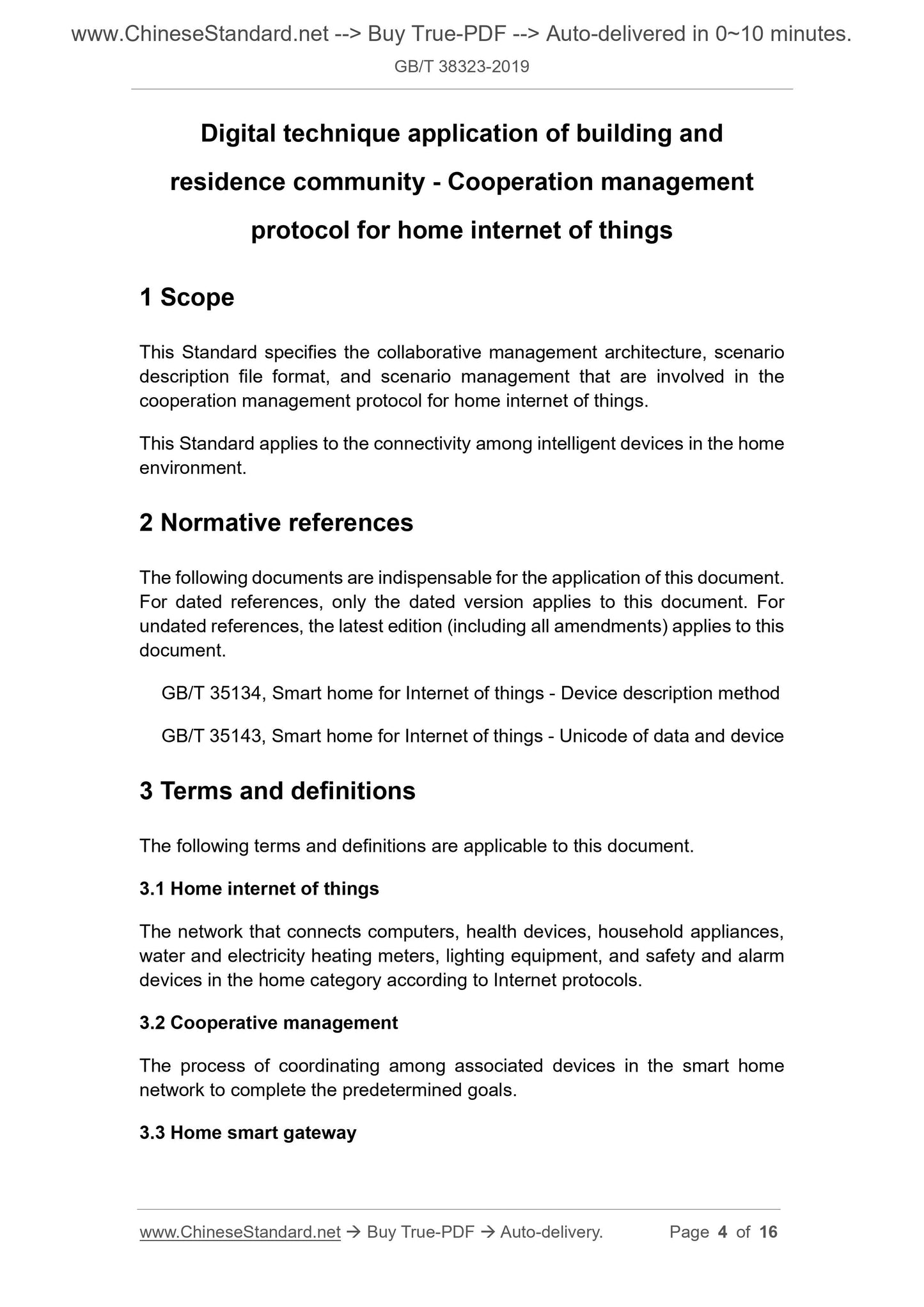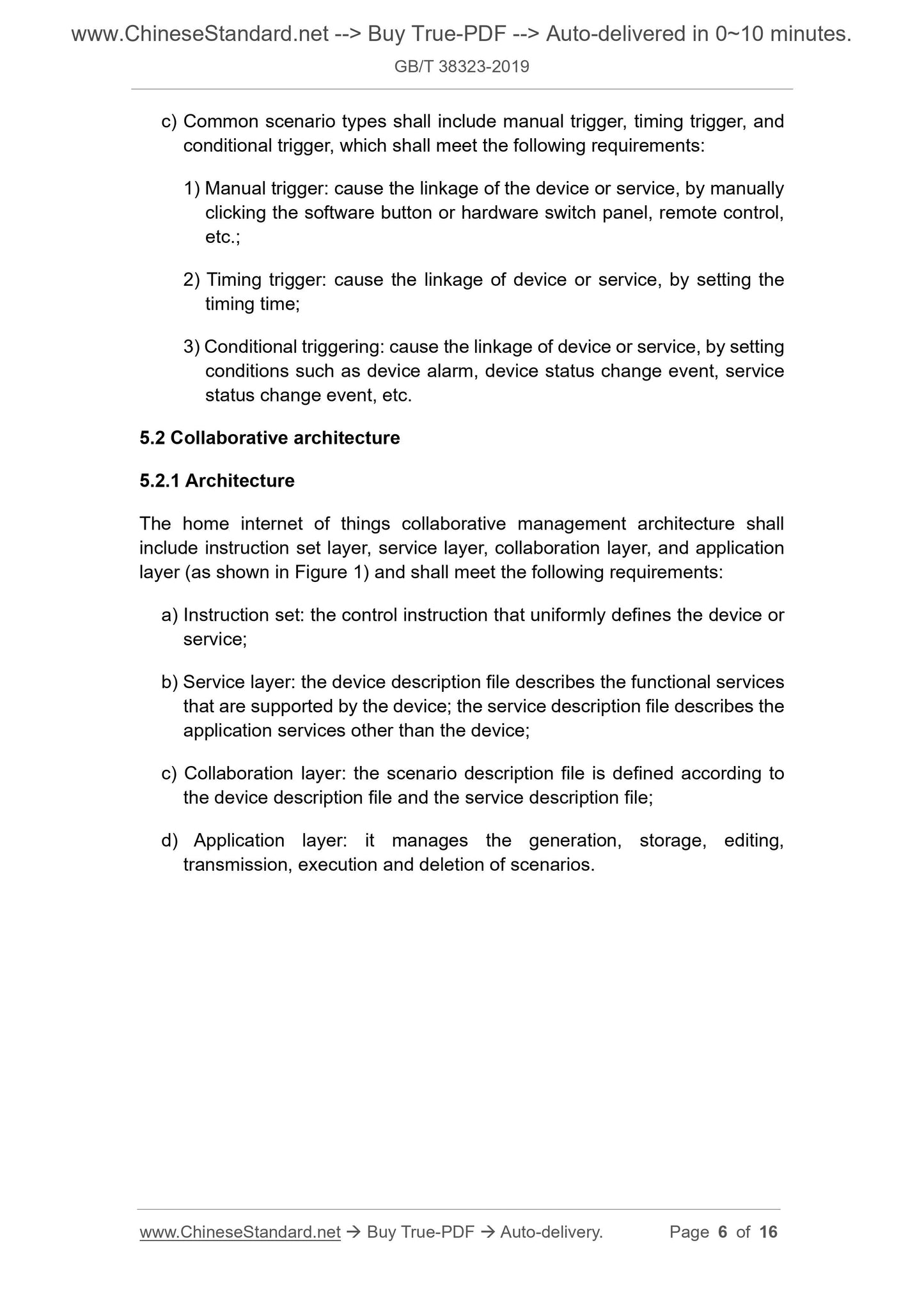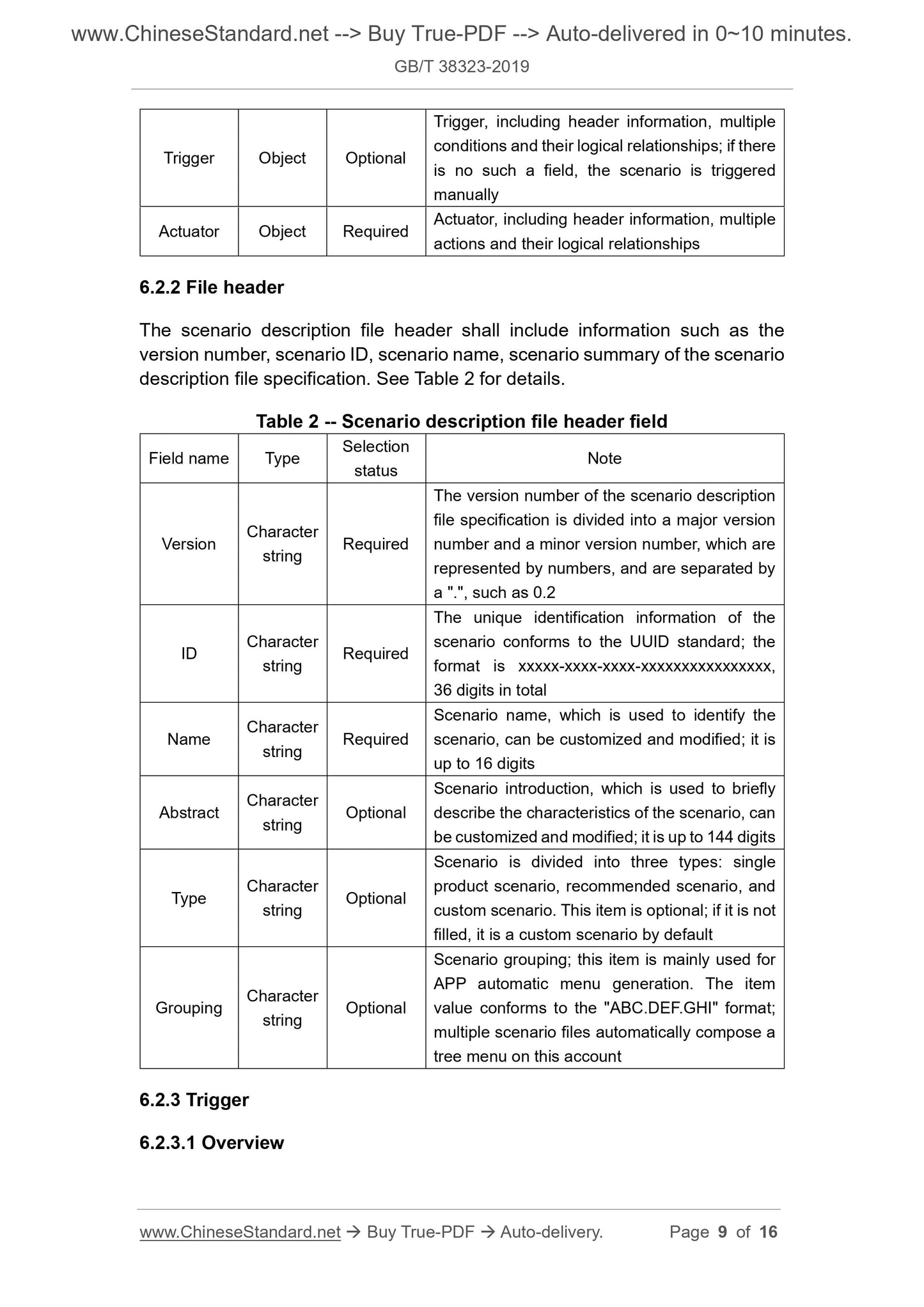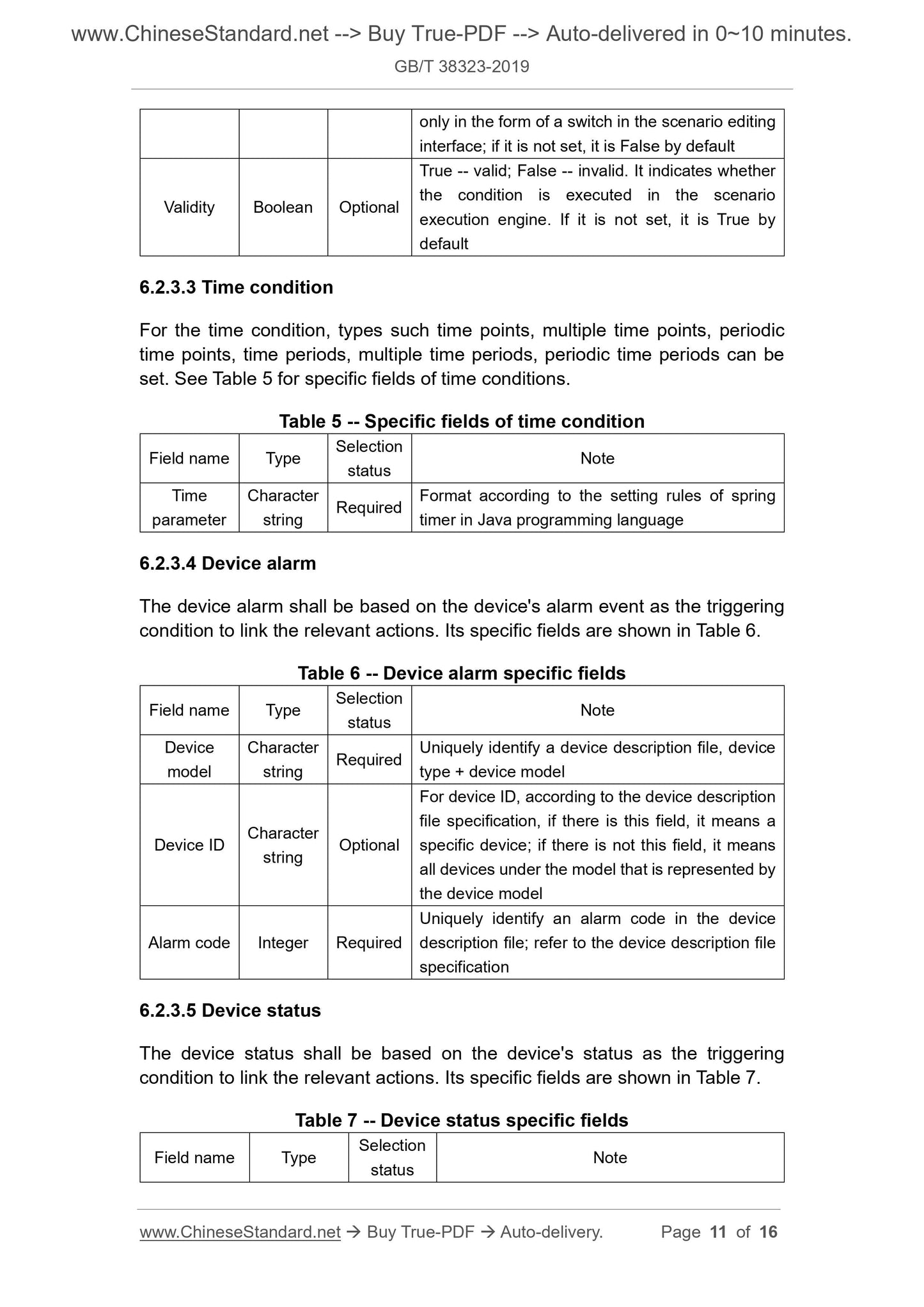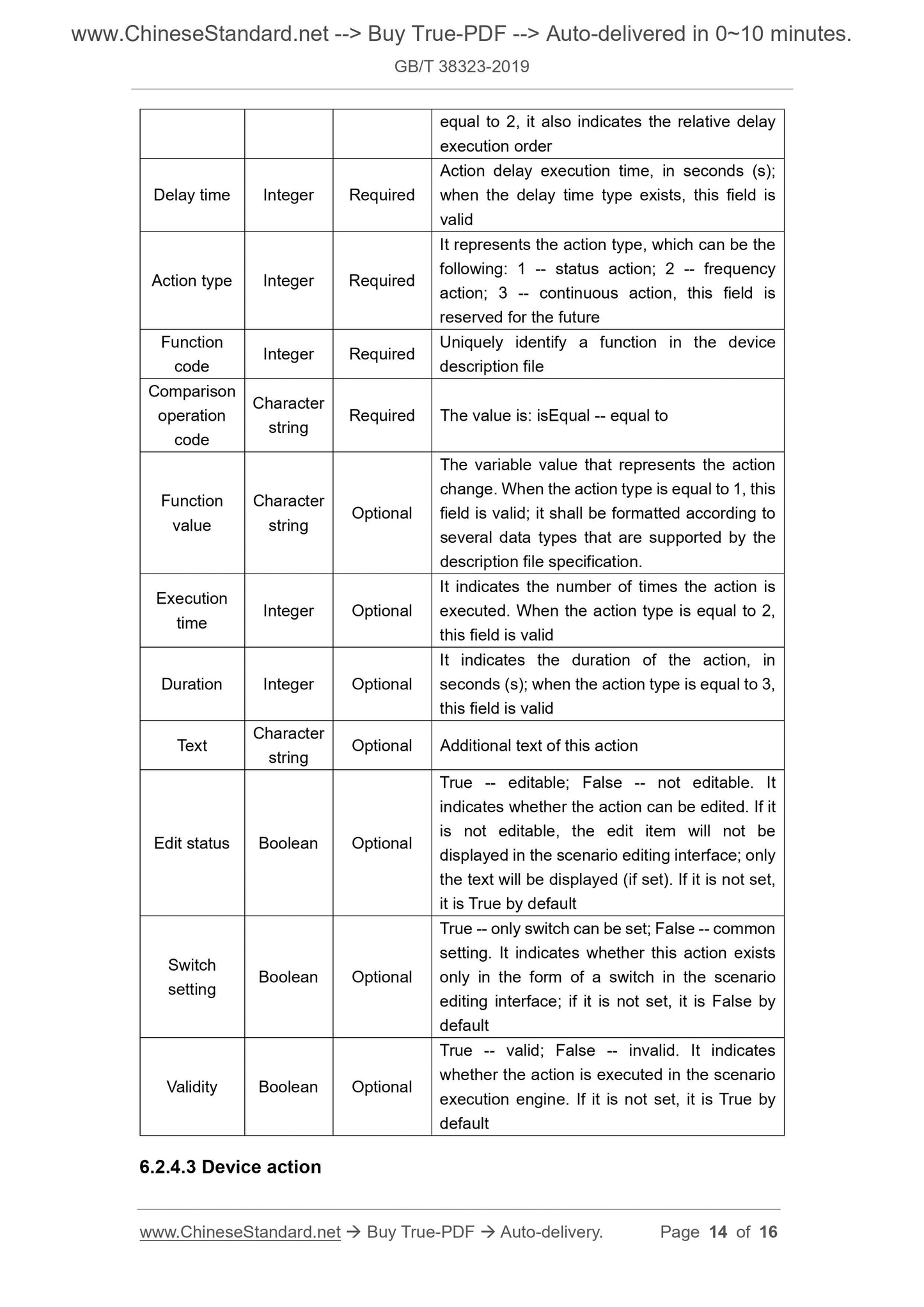1
/
of
7
www.ChineseStandard.us -- Field Test Asia Pte. Ltd.
GB/T 38323-2019 English PDF (GB/T38323-2019)
GB/T 38323-2019 English PDF (GB/T38323-2019)
Regular price
$200.00
Regular price
Sale price
$200.00
Unit price
/
per
Shipping calculated at checkout.
Couldn't load pickup availability
GB/T 38323-2019: Digital technique application of building and residence community - Cooperation management protocol for home internet of things
Delivery: 9 seconds. Download (and Email) true-PDF + Invoice.Get Quotation: Click GB/T 38323-2019 (Self-service in 1-minute)
Newer / historical versions: GB/T 38323-2019
Preview True-PDF
Scope
This Standard specifies the collaborative management architecture, scenariodescription file format, and scenario management that are involved in the
cooperation management protocol for home internet of things.
This Standard applies to the connectivity among intelligent devices in the home
environment.
Basic Data
| Standard ID | GB/T 38323-2019 (GB/T38323-2019) |
| Description (Translated English) | Digital technique application of building and residence community - Cooperation management protocol for home internet of things |
| Sector / Industry | National Standard (Recommended) |
| Classification of Chinese Standard | L70 |
| Classification of International Standard | 35.240 |
| Word Count Estimation | 14,129 |
| Date of Issue | 2019-12-10 |
| Date of Implementation | 2020-07-01 |
| Issuing agency(ies) | State Administration for Market Regulation, China National Standardization Administration |
Share
